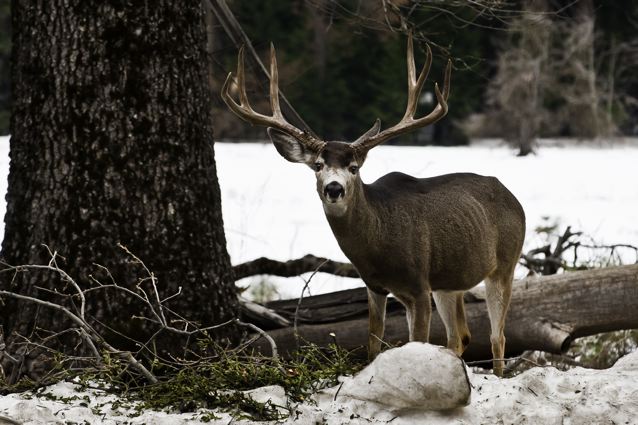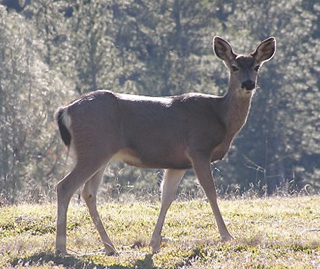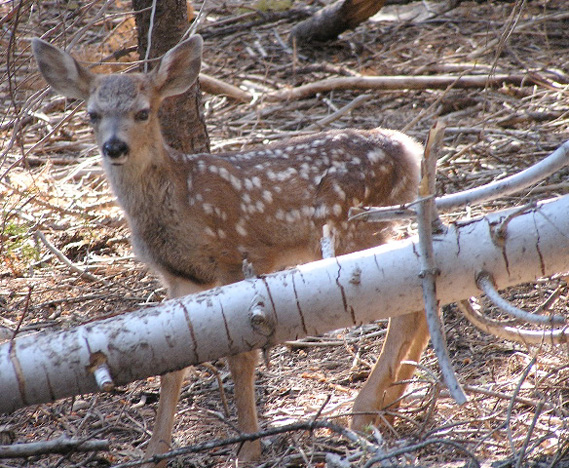Mule deer are one of the most commonly seen wildlife species in the Sierra Nevada region. Adults usually reach a length of 5 or 6 feet and a weight of up to 200 lbs. The name mule deer is in reference to their large ears that resemble those of a mule.
Although males (bucks) and females (does) look similar, males are generally bigger than females and during the summer and fall seasons, the males have antlers. Deer live throughout the Sierra Nevada in the summer months (from the high mountains to the low foothills), but generally migrate to lower elevations in the winter where there is little or no snow.


What do mule deer eat?
Mule deer eat a variety of plants – including many kinds of shrubs, oak acorns, grasses, and groundcovers. Generally, their diet is determined by what’s available during a particular time of year.
How do mule deer reproduce?
Females usually give birth to one or two fawns around June. The fawns generally stay with the does until the does are ready to give birth again the following year.
Threats to mule deer
Although deer are vulnerable at any age, the young are particularly in danger of being preyed on by a mountain lion, coyote, or other predator. Locally, a mule deer herd known as the Tuolumne herd spend its winters in the Jawbone critical winter deer range and migrates into the Emigrant and Yosemite wildernesses in the summer. The Rim Fire in 2013 resulted in the loss of a large part of the Tuolumne herd. The deer you see in your backyard and in neighborhoods throughout the foothills and lower mountains are likely part of a non-migrating herd acclimated to living in residential areas.


